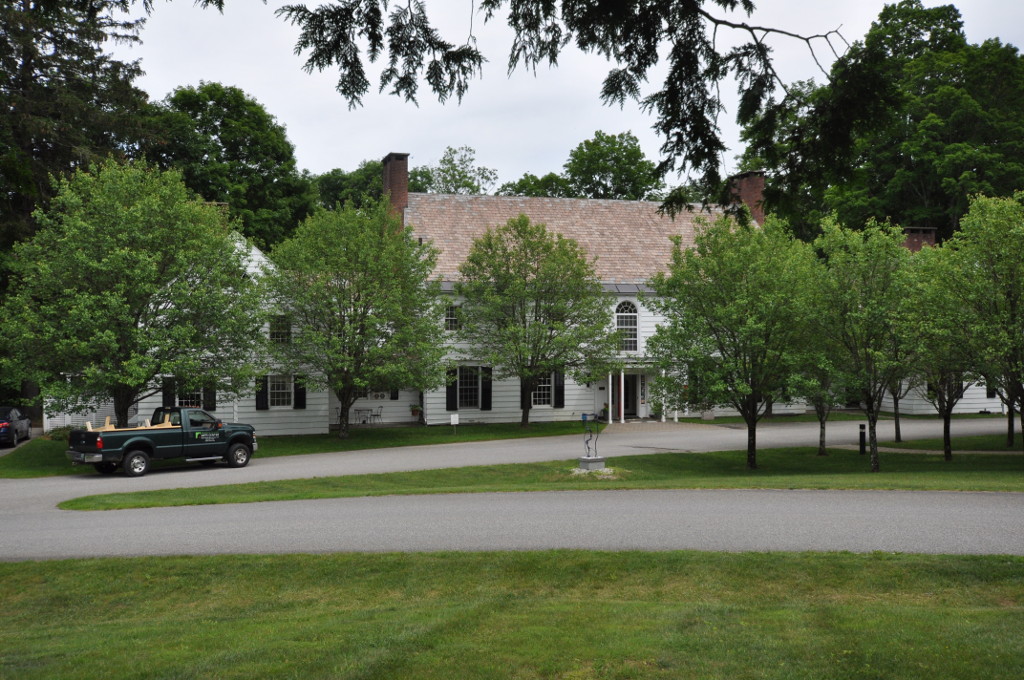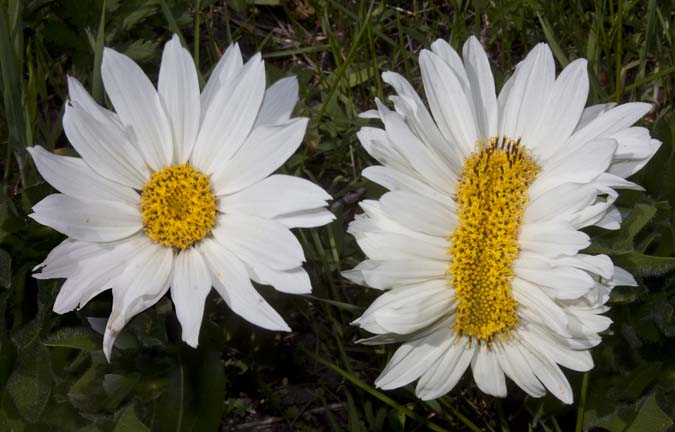|
Desert Botanical Garden
Desert Botanical Garden is a botanical garden located in Papago Park, at 1201 N. Galvin Parkway in Phoenix, central Arizona. Founded by the Arizona Cactus and Native Flora Society in 1937 and established at this site in 1939, the garden now has more than 50,000 plants in more than 4,000 taxa, one-third of which are native to the area, including 379 species, which are rare, threatened or endangered. Of special note are the rich collections of agave (4,026 plants in 248 taxa) and cacti (13,973 plants in 1,320 taxa), especially the Opuntia sub-family. Plants from less extreme climate conditions are protected under shadehouses. It focuses on plants adapted to desert conditions, including an Australian collection, a Baja California collection and a South American collection. Several ecosystems are represented: a mesquite bosque, semi-desert grassland, and upland chaparral. Desert Botanical Garden has been designated as a Phoenix Point of Pride. History In the 1930s, a small group ... [...More Info...] [...Related Items...] OR: [Wikipedia] [Google] [Baidu] |
Gertrude Webster
Gertrude Divine Webster (born Gertrude Adelaide Divine; June 4, 1872) was an American philanthropist known for co-founding the Desert Botanical Garden in Phoenix, Arizona, and establishing Yester House, her summer estate which is on the National Register of Historic Places and houses the Southern Vermont Arts Center. During her marriage to William McClellan Ritter (1898 to 1922) she was known as Gertrude Divine Ritter. She subsequently married Hugh Webster (1924 until 1928), and was known as Gertrude Divine Webster until her death on March 31, 1947. Early life and education Webster was born in 1872 in Sycamore, Illinois. Her parents were Richard L. Divine and Susan S. Smith Divine. She attended Ann Arbor High School. She earned a Bachelor of Letters from the University of Michigan in 1896. After college, she lived in Columbus, Ohio, where she founded the Big Sister movement in Columbus. On February 2, 1898, she married a lumber tycoon from West Virginia, William McClellan ... [...More Info...] [...Related Items...] OR: [Wikipedia] [Google] [Baidu] |
Phoenix, Arizona
Phoenix ( ; nv, Hoozdo; es, Fénix or , yuf-x-wal, Banyà:nyuwá) is the capital and most populous city of the U.S. state of Arizona, with 1,608,139 residents as of 2020. It is the fifth-most populous city in the United States, and the only U.S. state capital with a population of more than one million residents. Phoenix is the anchor of the Phoenix metropolitan area, also known as the Valley of the Sun, which in turn is part of the Salt River Valley. The metropolitan area is the 11th largest by population in the United States, with approximately 4.85 million people . Phoenix, the seat of Maricopa County, has the largest area of all cities in Arizona, with an area of , and is also the 11th largest city by area in the United States. It is the largest metropolitan area, both by population and size, of the Arizona Sun Corridor megaregion. Phoenix was settled in 1867 as an agricultural community near the confluence of the Salt and Gila Rivers and was incorporated as ... [...More Info...] [...Related Items...] OR: [Wikipedia] [Google] [Baidu] |
Mesquite
Mesquite is a common name for several plants in the genus '' Prosopis'', which contains over 40 species of small leguminous trees. They are native to dry areas in the Americas. They have extremely long roots to seek water from very far under ground. As a legume, mesquites are one of the few sources of fixed nitrogen in the desert habitat. These trees bloom from spring to summer. They often produce fruits known as "pods". ''Prosopis'' spp. are able to grow up to tall, depending on site and climate. They are deciduous and depending on location and rainfall have either deep or shallow roots. ''Prosopis'' is considered long-lived because of the low mortality rate after the dicotyledonous stage and juveniles are also able to survive in conditions with low light and drought. The Cahuilla indigenous people of western North America were known to eat the seeds of mesquite. History ''Prosopis'' spp. have been in North America since the Pliocene era and their wood has been dated to 3 ... [...More Info...] [...Related Items...] OR: [Wikipedia] [Google] [Baidu] |
Botanical Gardens In Arizona
Botany, also called plant science (or plant sciences), plant biology or phytology, is the science of plant life and a branch of biology. A botanist, plant scientist or phytologist is a scientist who specialises in this field. The term "botany" comes from the Ancient Greek word (') meaning "pasture", "herbs" "grass", or "fodder"; is in turn derived from (), "to feed" or "to graze". Traditionally, botany has also included the study of fungi and algae by mycologists and phycologists respectively, with the study of these three groups of organisms remaining within the sphere of interest of the International Botanical Congress. Nowadays, botanists (in the strict sense) study approximately 410,000 species of land plants of which some 391,000 species are vascular plants (including approximately 369,000 species of flowering plants), and approximately 20,000 are bryophytes. Botany originated in prehistory as herbalism with the efforts of early humans to identify – and later cult ... [...More Info...] [...Related Items...] OR: [Wikipedia] [Google] [Baidu] |
List Of Botanical Gardens In The United States
This list is intended to include all significant botanical gardens and arboretums in the United States.BGCI Garden Search Botanic Gardens Conservation International American Public Gardens Association [...More Info...] [...Related Items...] OR: [Wikipedia] [Google] [Baidu] |
List Of Historic Properties In Phoenix, Arizona
This is a list, which includes photographic galleries, of some of the remaining historic structures and monuments, of historic significance, in Phoenix, Arizona, United States. Included are photographs of properties identified by the African, Asian and Hispanic historic property surveys of the City of Phoenix, focusing on the themes of history in Phoenix from 1870 to 1975. This list however, is not limited to historical structures and monuments. Also listed are historical landmarks, some of which are listed in the National Register of Historic Places such as the Pueblo Grande Ruin and Irrigation Sites and the Deer Valley Rock Art Center. These contain the ruins of structures and artifacts of the Hohokams who lived within the modern Phoenix city area before the arrival of the settlers of non-Native American origin. The abandoned Joint Head Dam and the early canals built by the early pioneers of European descent played an important role in the irrigation and development of Phoenix a ... [...More Info...] [...Related Items...] OR: [Wikipedia] [Google] [Baidu] |
List Of Botanical Gardens And Arboretums In Arizona
This list of botanical gardens and arboretums in Arizona is intended to include all significant botanical gardens and arboretums in the U.S. state of Arizona. See also *List of botanical gardens and arboretums in the Unit ...
[...More Info...] [...Related Items...] OR: [Wikipedia] [Google] [Baidu] |
Saguaro
The saguaro (, ) (''Carnegiea gigantea'') is a tree-like cactus species in the monotypic genus ''Carnegiea'' that can grow to be over tall. It is native to the Sonoran Desert in Arizona, the Mexican state of Sonora, and the Whipple Mountains and Imperial County areas of California. The saguaro blossom is the state wildflower of Arizona. Its scientific name is given in honor of Andrew Carnegie. In 1994, Saguaro National Park, near Tucson, Arizona, was designated to help protect this species and its habitat. Saguaros have a relatively long lifespan, often exceeding 150 years. They may grow their first side arm around 75–100 years of age, but some never grow any arms. Arms are developed to increase the plant's reproductive capacity, as more apices lead to more flowers and fruit. A saguaro can absorb and store considerable amounts of rainwater, visibly expanding in the process, while slowly using the stored water as needed. This characteristic enables the saguaro ... [...More Info...] [...Related Items...] OR: [Wikipedia] [Google] [Baidu] |
Fasciation
Fasciation (pronounced , from the Latin root meaning "band" or "stripe"), also known as cresting, is a relatively rare condition of abnormal growth in vascular plants in which the apical meristem (growing tip), which normally is concentrated around a single point and produces approximately cylindrical tissue, instead becomes elongated perpendicularly to the direction of growth, thus producing flattened, ribbon-like, crested (or "cristate"), or elaborately contorted tissue. Fasciation may also cause plant parts to increase in weight and volume in some instances. The phenomenon may occur in the stem, root, fruit, or flower head. Some plants are grown and prized aesthetically for their development of fasciation. Any occurrence of fasciation has several possible causes, including hormonal, genetic, bacterial, fungal, viral and environmental causes. Cause Fasciation can be caused by hormonal imbalances in the meristematic cells of plants, which are cells where growth can occur. Fa ... [...More Info...] [...Related Items...] OR: [Wikipedia] [Google] [Baidu] |
George Edmund Lindsay
George Edmund Lindsay (1916 – 2002) was an American botanist, naturalist, and museum director. From 1956 to 1963, he was director of the San Diego Natural History Museum and served as Director of the California Academy of Sciences from 1963 to 1982. At both institutions, Lindsay led research field expeditions to the islands in the Sea of Cortez (Vermilion Sea and Gulf of California) found between the Baja California Peninsula and mainland Sonora, Mexico. These expeditions relied on the Vermilion Sea Field Station at Bahia del Los Angeles as their base of operations, which he facilitated and organized. He was active in transnational conservation efforts to protect the islands as biodiversity sanctuaries in the Gulf of California. Biography Lindsay was born in Los Angeles County, in Pomona, California, on August 17, 1916, to orchardists Alice H. Foster and Charles W. Lindsay. He attended Chaffey Junior College (in Ontario, California) and San Diego State College before ... [...More Info...] [...Related Items...] OR: [Wikipedia] [Google] [Baidu] |
Margaret Bell Douglas
Edith Margaret Bell Douglas (February 7, 1880 – October 10, 1963) was a Canadian botanist and horticulturist known for her work in the Southwestern United States and Mexico. She helped establish the Desert Botanical Garden and donated 1,500 of her own specimens to its herbarium. She is a member of the Arizona Women's Hall of Fame and the namesake of the Garden Club of America's Margaret Douglas Medal. Biography Edith Margaret Bell was born on February 7, 1880 in Montreal. Her father, geologist Robert Bell, took her with him on surveys and mapping expeditions when she was a child. Bell was educated in Europe and presented to Queen Victoria at the Court of St. James. She married Walter Douglas, a mining engineer and railroad manager, in September 1902. The couple moved into an adobe house in Bisbee, Arizona. In 1908, they moved to a large house in Warren and donated their previous home to the YWCA. They had five children and frequently spent their summers in Santa Barbara, Califo ... [...More Info...] [...Related Items...] OR: [Wikipedia] [Google] [Baidu] |
Sonoran Desert
The Sonoran Desert ( es, Desierto de Sonora) is a desert in North America and ecoregion that covers the northwestern Mexican states of Sonora, Baja California, and Baja California Sur, as well as part of the southwestern United States (in Arizona and California). It is the hottest desert in both Mexico and the United States. It has an area of . In phytogeography, the Sonoran Desert is within the Sonoran Floristic province of the Madrean Region of southwestern North America, part of the Holarctic realm of the northern Western Hemisphere. The desert contains a variety of unique endemic plants and animals, notably, the saguaro (''Carnegiea gigantea'') and organ pipe cactus (''Stenocereus thurberi''). The Sonoran Desert is clearly distinct from nearby deserts (e.g., the Great Basin, Mojave, and Chihuahuan deserts) because it provides subtropical warmth in winter and two seasons of rainfall (in contrast, for example, to the Mojave's dry summers and cold winters). This create ... [...More Info...] [...Related Items...] OR: [Wikipedia] [Google] [Baidu] |






